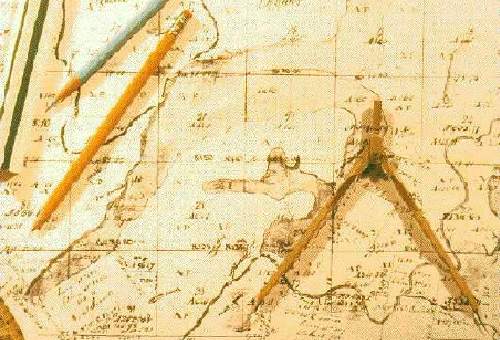In spite of modern construction and farming, many abandoned Mississippi River
channels and associated fluvial features are still visible to the trained eye
examining topographic maps. These features have made it clear for some time
that the "natural" landscape of the American Bottom was quite poorly drained
and swampy. What was lacking, however, was a detailed map of the 600-1000 year
old Mississippian landscape that would help archaeologists understand
specifically why these people settled in some places but not others, and how
their subsistence economy worked (ECON).

Public Land Survey map - one source for developing a baseline for reconstructing the historic 19th century
natural environment.
|
Mapping of environmental features shown in early- to mid-19th century records
(including Public Land Survey Maps, Mississippi River navigation charts,
diaries, and associated sketch maps) has begun to remedy this situation,
greatly augmenting environmental information drawn from existing topographic
maps and clarifying our image of the American Bottom's natural landscape.
|
For example, the Public Land Survey (PLS) maps of the early 1800s, later
published by the General Land Office (GLO), show what the American Bottom was
like just prior to extensive Euroamerican settlement and landscape
modification. PLS maps show the location of Native American settlements, roads,
taverns, homesteads, and the location of prairies, forests, wet, and dry land.
Water bodies mapped by these 19th-century surveyors were drawn on modern
topographic maps and transferred into a Geographic Information System -- a
computerized mapping and spatial analyst system (HDYK-ENV). Thus, examination
of these and other historical documents highlight the opportunities and
problems life on this floodplain presented to its Mississippian inhabitants
(Milner 1998; Milner and Oliver 1999).
[Previous] [Next] [Up] [Top]
